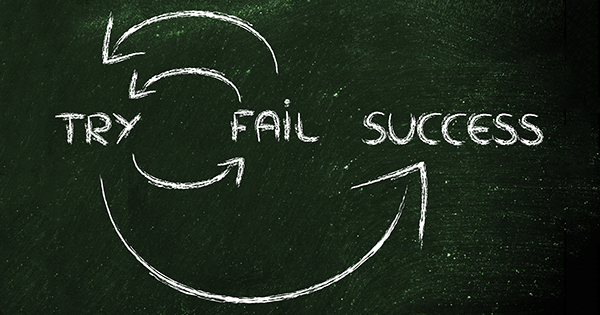
This post has been updated as of December 2017.
My students never know what to make of my “I hope you fail” lecture. After years of teachers asking for the right answers, they aren’t accustomed to someone highlighting or requesting the wrong ones.
Students’ failures tend to linger, creating mental baggage that interferes with learning. Lifting the burden requires us to address failure head-on and encourage students to accept it as a natural part of getting educated.
Here’s how teachers can help students see the benefits and advantages of making mistakes:
Don’t let ideas become precious
Student benchmarks have become more complicated, forcing students to transcend content knowledge and develop critical-thinking skills. This means more guessing, which can be intimidating for students.
In a discussion with Scientific American podcaster Steve Mirsky, Arizona State University physicist Lawrence Krauss recently pointed out that real-world problems are “not solvable exactly” and that students must be able to change the course of their thinking for a variety of reasons. The flexibility and the stick-to-it-iveness of facing failure head-on are fundamental to long-term student success.
While educators have to ensure that students have the right content and support to avoid chronic failure, it is just as important to embrace mistakes as an inevitable part of education. Adopting a “fail faster” attitude makes students more likely to do the difficult work we ask of them. Often, even their failures tell us something about their understanding.
Give students permission to get things wrong
Our culture is so focused on success or perfection that we miss the benefits of failure. To encourage students to accept failure as essential to progress, I share with them a decontextualized Samuel Becket quote: “Ever tried. Ever failed. No matter. Try again. Fail again. Fail better.”
I also show them a video on game design by Extra Credits that reinforces the “fail faster” ethos. Both the quote and the video help students see something really essential to education: We are going to mess up, and that’s OK.
In her piece “5-Minute Film Festival: Freedom to Fail Forward,” Edutopia author Amy Erin Borovoy compiled a set of videos and articles on the subject of failure. Paraphrasing John Dewey, Borovoy reminds readers that “a true thinker learns as much from failures as from successes.” Incorporating these short videos as monthly or weekly reminders can be a great way to start “how have we failed and what have we learned” discussions with students.
Make failure another chance to get it right
Using a technique called “Effective Failure,” educators can work failing faster into the classroom. In my writing class, I often ask students to volunteer samples of their best or worst writing. This lets writers illustrate their understanding that a sentence, transition, word choice, or paragraph construction has failed, and it inspires a sincere interest in better writing. An astronomy instructor I work with asks students questions and then, in small groups, has them explain their thinking to their group, saying, “Explain your answer to your neighbor and try to convince them you’re right.”
In this exercise, each student at the table becomes an expert hashing out truth. Then the teacher asks students to share their answers. These answers, especially the wrong ones, help her identify student misunderstandings and clear them up immediately.
Incorporating failure into class design prevents students from being too afraid to answer. It also ensures they aren’t more invested in being right than understanding the problems they’re trying to solve.
Take a few risks
Students who integrate mistakes into the educational process are prepared for the feedback that helps them grow. A classroom that thinks this way provides an additional bonus for teachers: Once unleashed from our own struggle for perfection, we can take risks ourselves. In fact, we must take risks, get feedback and be ready to incorporate failure.
Students are not the only ones who can learn from their mistakes.
Monica Fuglei is a graduate of the University of Nebraska in Omaha and a current faculty member of Arapahoe Community College in Colorado, where she teaches composition and creative writing.
Categorized as: Tips for Teachers and Classroom Resources
Tagged as: Mid-Career Teacher, New Teacher, Professional Development
